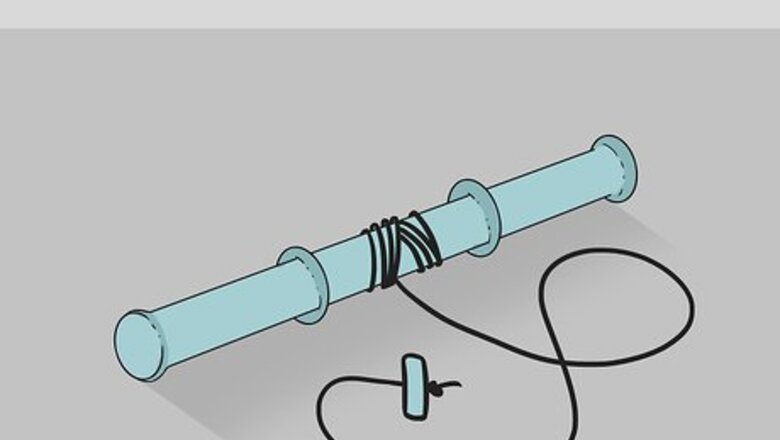
views
Performing Wrist Roller Exercises
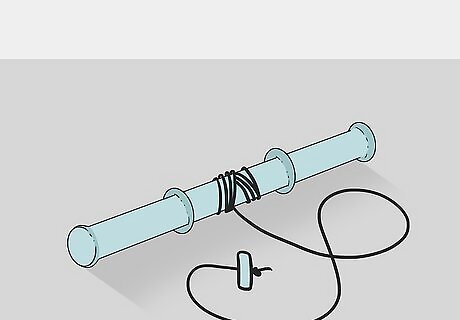
Get or make a wrist roller. This is simply a bar or rod with a rope tied around its midpoint. The other end of the rope is attached to a weight. This simple piece of equipment is one of the most effective ways to build forearm muscle and train grip strength.
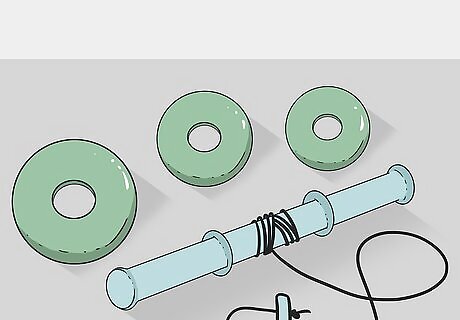
Start with a very light weight, and increase the weight gradually. Most people cannot lift nearly as much with their wrist as they can with their full arm. Find the weight where a set is challenging, but not painful or extremely difficult.
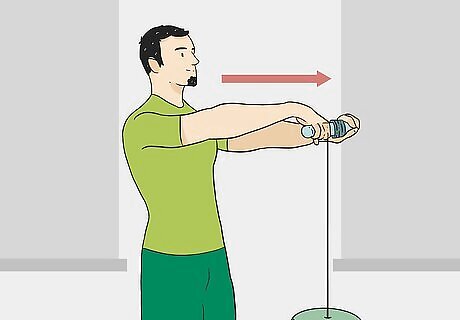
Hold the rod in front of you. Grip the rod in both hands and hold it in front of you at around waist level. Since this position is not difficult to maintain, your wrists will be the limiting factor of the exercise. This lets you repeat the wrist roller exercise as long as your wrists are holding up. You can extend your arms straight in front of you instead to work your lower arms and shoulders as well, but this will likely limit the number of repetitions you can perform.
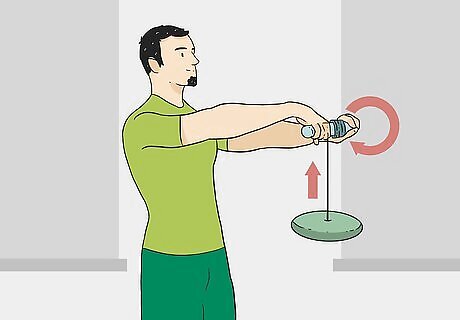
Rotate the rod. Maintain your grip with one hand and turn the rod with the other to wind the rope around the rod. Alternate the turning and gripping hands until the rope is fully wound and the weight reaches the rod. Try to keep the rod in position as you rotate it, without much tilting back and forth.
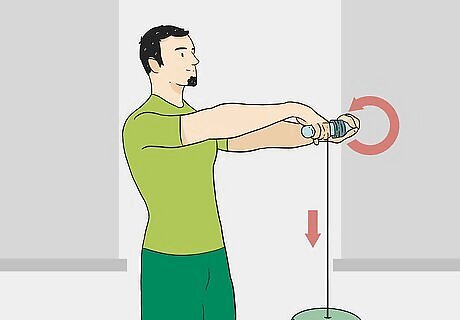
Rotate the weight back down. Rotate the rod the other way until the rope is fully extended. Do this slowly and evenly. If the rod keeps slipping out of your grip, wrap a grip around the rod to reduce friction, or just focus on the upward motion. Try 3 sets of 10 reps.
Performing Loaded Carries
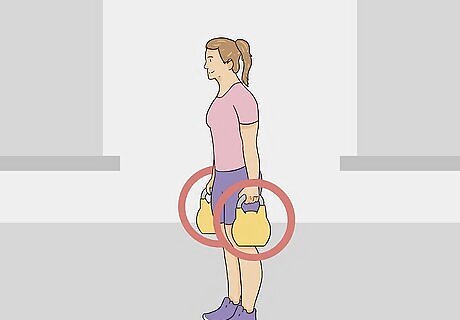
Lift a heavy dumbbell or kettle bell in each hand. This exercise is geared toward working your forearm muscle endurance by maximizing the time under tension. Start by lifting the dumbbells or kettle bells of your preference. Since “heavy” is relative to your routine, try a weight heavier than you would try to curl but not so heavy that you have to strain. You can always add more or less as needed. If you really want to maximize this workout, instead of barbells or kettle bells, lift two weight plates pinched together in each hand instead. You will have to work your grip—and therefore forearms—extra hard to keep the plates pinched together so they don’t fall. If you want to try loading even more weight into this exercise, try using a trap bar instead. With a trap bar, you can stand in the middle and lift the weight with both arms, which allows you to carry much more than your arms working individually.

Stand up straight. In order to put the brunt of the weight on the correct muscle groups, you want to brace your abs, keep your chest up, and keep your shoulders back. If you hunch, you’ll divert too much of the strain to your upper arms or back.
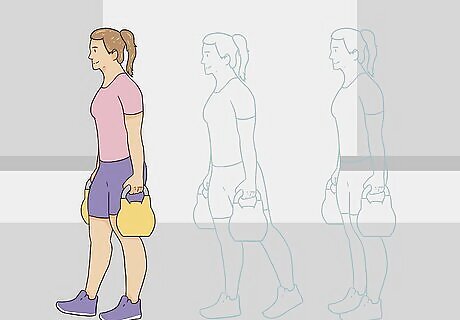
Start walking. The natural movement and inertia from walking will work your forearms much more than simply standing in place holding the weights, so start walking. Try this workout in sets of twenty yards to start with, or whatever you find comfortable. Increase the length of time gradually. Walking for a long time or using heavy weights before you are ready can cause a shoulder injury.
Performing Individual Wrist Curls
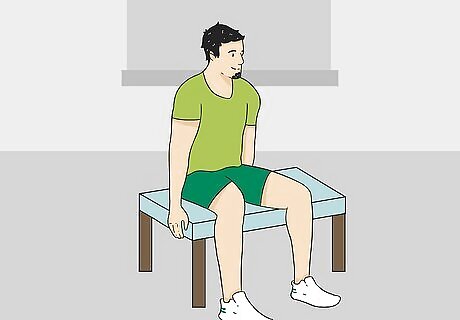
Sit at the edge of your workout bench. This exercise requires you to be in a sitting stationary position, so take a seat at the edge of your workout bench. You also want to have your feet flat and your knees shoulder-width apart.
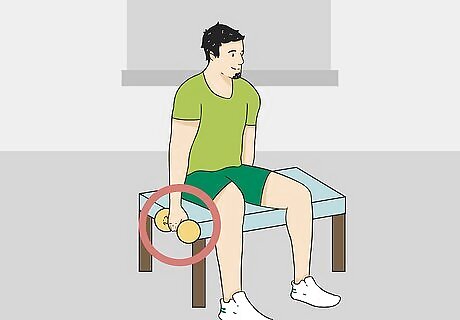
Lift an appropriate dumbbell or kettle bell in each hand. Since this is specifically targeting your wrists and forearms, you will want to start with less weight than you typically use for full-arm curls. You can start with as little as five-pound weights in each hand and increase them incrementally if they prove far too easy. If you prefer, you can always work just one forearm at a time, which means you can pick up just one weight. Make sure you do the same number of sets and repetitions with each forearm to ensure an equal workout.
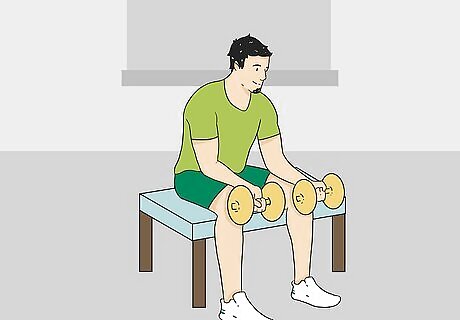
Rest your elbow on your thigh with your arm flat. By resting your arm on your leg, you put the majority of the weight on your forearm instead of your bicep. This position also braces your arm, which allows you to perform the curls with less risk of injury.
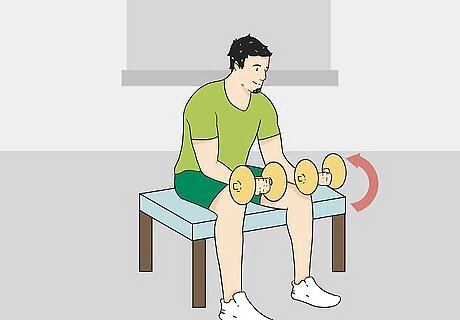
Curl the weight by moving only your wrist up and toward you. Each rep of this workout requires curling the weight up and toward you and then back down. You additionally want to ensure that you breathe out while curling the weight and that you inhale while lowering it. To get the most out of this exercise, try performing sets of both upward and downward wrist curls. Upward means your palm is facing up, so the weight rests against it. Downward means your palm is facing down, so the weight rests mostly against your fingers. Each direction will work different forearm muscle groups.
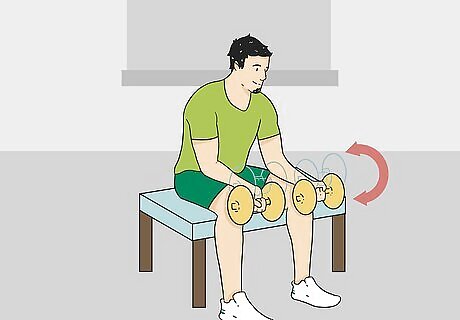
Repeat for 12-15 repetitions. If you have chosen the ideal amount of weight for this exercise, then you should be able to do a set of twelve-to-fifteen repetitions and just barely be able to perform the final one.
Performing Barbell Wrist Curls

Sit with your forearms down on a flat bench. For this exercise, you want to place your forearms flat with your hands and wrists protruding off the edge of the bench. If you use a standard workout bench, you can simply kneel to the side of it in order to rest your forearms on the bench—just make sure to put something down to cushion your knees.
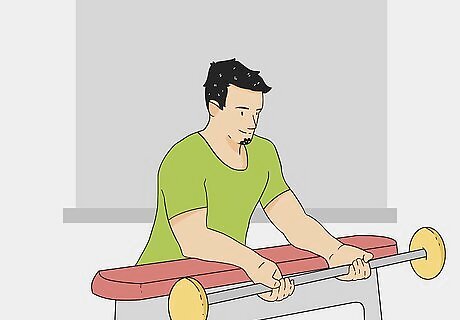
Lift up the barbell with both hands. In order to balance the weight, you want your hands roughly shoulder-width apart to form your grip on the barbell. To start, use a standard grip with your palms facing upward. Again, the ideal amount of weight is going to vary by person. You should aim for an amount that allows you to do twelve-to-fifteen repetitions before tiring out.
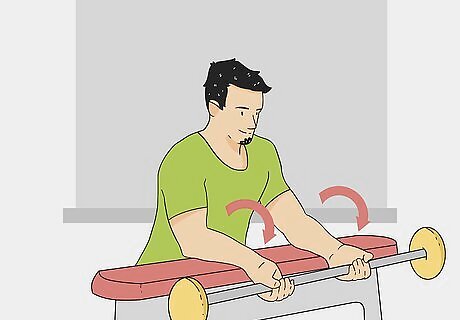
Lower your wrists. The starting position is going to be with your wrists lowered so that the barbell is hanging low in your grip.
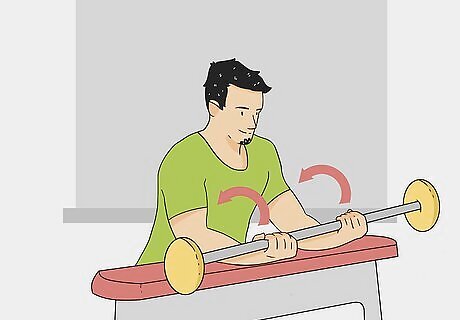
Curl the barbell up and toward you. With a slow, controlled motion, you want to curl the barbell up and toward you. By moving the barbell slowly, you maximize the gain on each repetition. You want to curl your wrists all the way, bringing the barbell as close to you while only using your wrists as possible, before letting it back down. At the apex of this motion, you will feel the hard squeeze in your forearms.
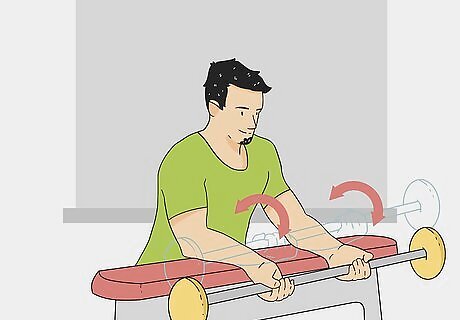
Do 12-15 repetitions. As with the individual wrists routine, you want to do twelve-to-fifteen reps in your set before stopping. If you cannot do this many, try curling less weight.
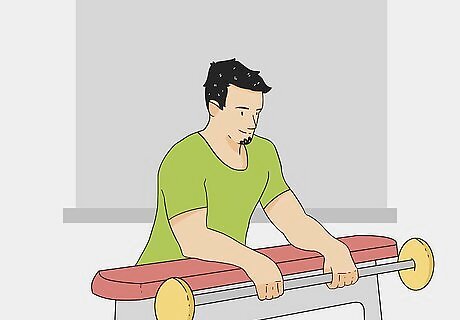
Flip your arms over and do the curls downward. This is another workout that you can do with either upward or downward curls. To work a different forearm muscle group, turn your arms over on the bench so your palms face downward. Then lift the barbell back up and do the curls so you can see the backs of your hands.
Utilizing Forearm-Building Grips
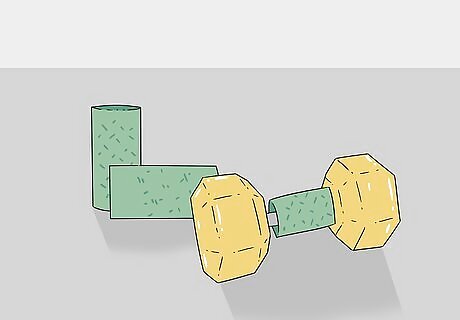
Increase the girth of your grip. You can additionally increase the workout on each forearm by enlarging the grip on your barbells and dumbbells. You can purchase a fitness product tailored to go over the bar or simply wrap a towel around it. The larger grip area forces you to squeeze harder to maintain your hold, which in turn works your forearms even more.
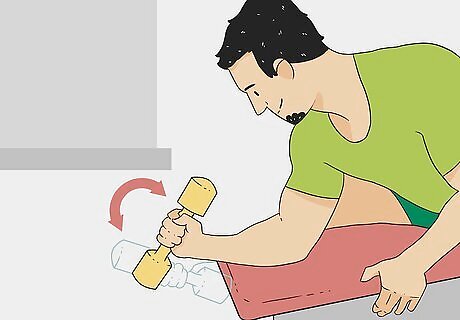
Use a hammer grip whenever possible. Utilizing a hammer grip for other exercises will also increase the workout on your forearms. A hammer grip is when the palm faces inward rather than up. You can use a hammer grip with dumbbells or even two-handed workouts such as chin-ups. By using a hammer grip, less weight rests on your palms, which forces you to grip more tightly.
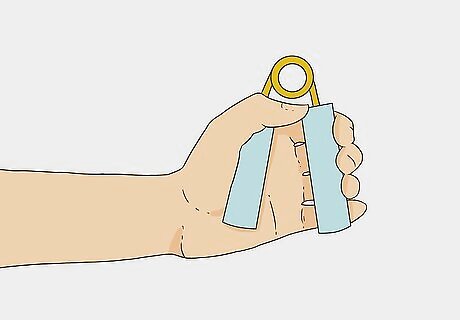
Use handgrips while away from the gym. A good old-fashioned pair of hand grips with the metal tension coil at the top are an easy way to work forearm muscles while multitasking. Alternatively, you can squeeze a spare tennis ball or racquetball that you have around as well. Anything dealing with isolating and working your hand grip will work your forearm muscles.
Using Bodyweight Exercises
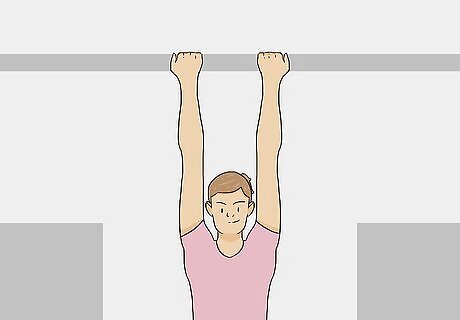
Do dead hangs. Some people may prefer using their own bodyweight as the main resistance while building muscle since bodyweight workouts are easier to do at home and don’t require gym equipment. Dead hangs are simply holding onto something above you and supporting your bodyweight with your grip alone. Since the tension is on your grip, you squeeze harder the longer you hang and work forearm muscles. The larger the surface you choose to grip, the harder you will have to squeeze, so something wider than a typical chin-up bar will work your forearms harder.
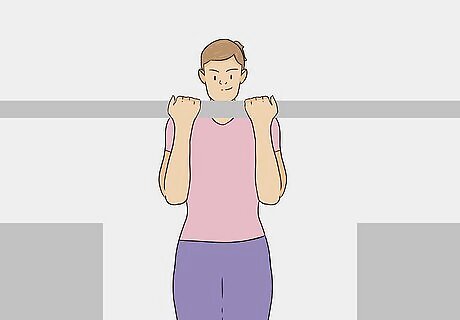
Do dead hangs into chin-ups. For a harder, advanced workout, you can do a dead hang of several seconds at the bottom of every chin-up. The pause will ensure that you’re not using any body swing or inertia to start the next chin-up as well.
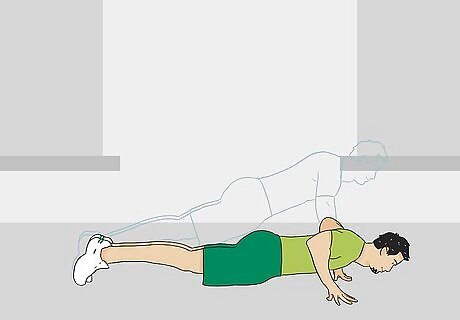
Do finger and wrist push backs. You can do this exercise either leaning against a bar or a table, or you can do it on the ground in a push-up position (which will be harder). Lean your weight against the surface, and use your wrists and fingers to push your weight back off the surface. In a push-up position, for instance, you will not bend at the elbows to lower yourself; instead, keep your elbows straight and use your wrists and fingers to push off the ground and lift yourself even higher. You can add this extra movement onto each normal push-up to get more out of every repetition as well.




















Comments
0 comment